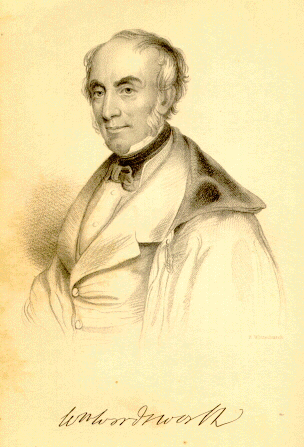Breaking Frame
Today, we break and rebuild our frame of reference. The University of Houston's College of Engineering presents this series about the machines that make our civilization run, and the people whose ingenuity created them.
A breaking frame was a device used in a textile mill. Loose cotton fibers were laid out and fed to a roller-box -- the breaking frame. It overlapped the strands and made them continuous.
As Julie Wosk looks at 19th-century technology, that breaking frame becomes her metaphor for the act of integrating separate strands into a whole. It's also a pun -- a contradiction. The iron, steam-powered world that rose out of 18th-century revolution broke every frame of human reference.
Just as we tore cotton apart and reassembled it, 19th-century technology tore society apart and reassembled it. Meanwhile, artists and poets helped us cope with fire, steam, and iron.
Wosk shows us two paintings of the Coalbrookdale Colliery. One from 1777 shows incidental smokestacks in a bucolic scene. Then, in 1801, Loutherbourgh's famous Coalbrookdale by Night turned that into a glowing, smoking vision of Hell.
By 1814 Wordsworth voiced his doubts:
... I have lived to mark
A new and unforeseen creation rise
From out the labors of a peaceful Land
Wielding her potent enginery to frame
And to produce, with appetite as keen
As that of war, which rests not night or day
Industrious to destroy! ...
By now the intensity of steam power had created the first industrial accidents. Soon railroad boiler explosions and collisions were taking their toll. In America we suffered terrible steamboat explosions. The public was drawn to the exhilarating speed of steam vehicles. But they also shrank from Wordsworth's "... appetite ... keen as ... war ... Industrious to destroy!"
We had to develop better safety valves and boiler plate. But we also had to tie our engines to a familiar cultural frame. Engine-makers made the central steam engine pillar in the form of a cast-iron Doric column. We decorated Philadelphia's Fairmount water-works with Classic columns and figurines. We topped the 1860 Atwater sewing machine with a pretty Grecian urn.
Not 'til this century did we finally settle on the artistic iconography of modernism. We wrote a new lexicon of smooth stream lines. We laid function bare--put it out where we could see it.
So the artistic form that we call technology first breaks our frame of reference. The 19th-century artists whom we call engineers set the stage for artists with brushes and pens.
Look around you now. See the signs. See how art is helping us cope with the information revolution. Watch art creating a new vocabulary of computer graphics. Watch art acknowledging the technological force that's breaking our frame of reference today.
I'm John Lienhard, at the University of Houston, where we're interested in the way inventive minds work.
(Theme music)
Wosk, J., Breaking Frame: Technology and the Visual Arts in the Nineteenth Century. New Brunswick, NJ: Rutgers University Press, 1992.

From Poems of Imagination and Fancy, 1891
William Wordsworth